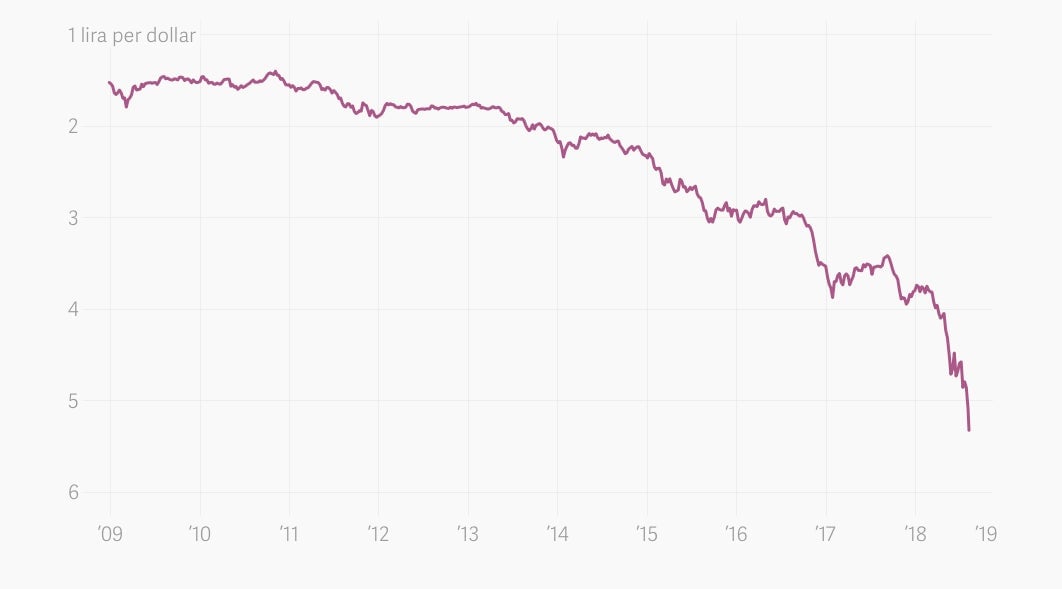The relentless decline of the Turkish lira, as told through exasperated Financial Times headlines
Buying the Turkish lira, according to one analyst, is like “catching a falling knife.” Writing imaginative headlines about the currency’s unceasing ability to hit new lows, however, is even harder.


Buying the Turkish lira, according to one analyst, is like “catching a falling knife.” Writing imaginative headlines about the currency’s unceasing ability to hit new lows, however, is even harder.
The currency’s problem is as much political as it is economic. In June, president Recep Tayyip Erdogan’s reelection ushered him into office with newly expanded powers. One of his first moves was to appoint his son-in-law to lead the country’s newly combined treasury and finance ministry.
Erdogan has also increased his influence over Turkey’s central bank. He has long made his hatred of higher interest rates known. In May, he called them the “mother and father of all evil.” As far back as June 2013, he blamed the “interest rate lobby” for orchestrating protests in Istanbul. This pressure has made the country’s central bank reluctant to do one of the main things central banks do when a country’s currency is tumbling: raise interest rates. That has led to soaring inflation—and years of exasperated, and altogether interchangeable, Financial Times headlines about the lira setting yet another all-time low (all paywalled):
Aug. 3, 2018 Turkish lira hits fresh historic low
July 11, 2018 Turkish lira hits record low against the dollar
June 15, 2018 Turkish lira slides almost 6% in worst week in a decade
May 24, 2018 Turkish lira resumes slide despite rate hike
May 22, 2018 Lira swings to new record low in abrupt move
Jan. 11, 2017 Lira suffers 4% plunge – steepest since failed coup
Nov. 8, 2016 Turkish lira rout deepens to hit fresh all-time low
Nov. 7, 2016 Turkish lira hits lowest level since at least 1981
Oct. 28, 2016 Turkish lira at another record low
Oct. 17, 2016 Turkish lira hits record low (again)
Oct. 13, 2016 Turkish lira sinks to fresh all-time low
Oct. 10, 2016 Turkish lira tumbles towards record low
July 20, 2016 Turkish lira falls to new record low on S&P downgrade
July 15, 2016 Turkish lira in steepest fall since 2008
June 8, 2015 Turkish lira hits low after election
Apr. 24, 2015 Turkish lira sinks to record low
Apr. 15, 2015 Turkish lira hits record dollar low
Jan. 16, 2014 Turkish lira hits new record low vs dollar